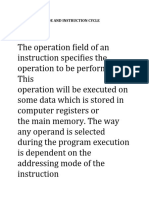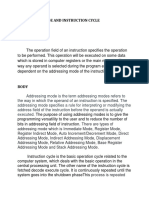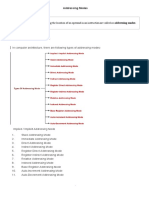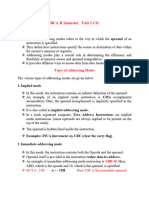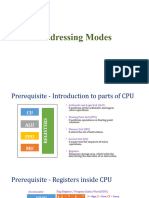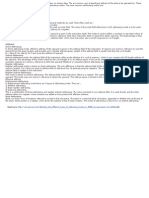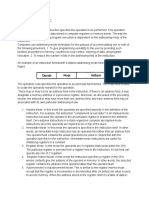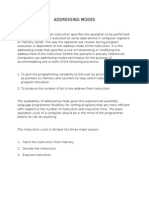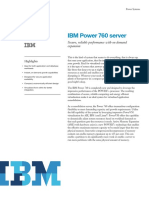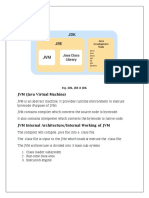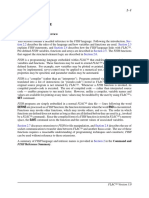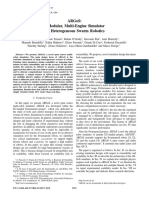0% found this document useful (0 votes)
14 views8 pagesAddressing
The document discusses addressing modes and the instruction cycle in computer organization. It outlines various types of addressing modes, including immediate, register, direct, and stack addressing modes, along with their advantages and disadvantages. Additionally, it describes the instruction cycle process, which includes fetching, decoding, reading the effective address, and executing the instruction repeatedly by the CPU.
Uploaded by
anasafzalg85Copyright
© © All Rights Reserved
We take content rights seriously. If you suspect this is your content, claim it here.
Available Formats
Download as DOCX, PDF, TXT or read online on Scribd
0% found this document useful (0 votes)
14 views8 pagesAddressing
The document discusses addressing modes and the instruction cycle in computer organization. It outlines various types of addressing modes, including immediate, register, direct, and stack addressing modes, along with their advantages and disadvantages. Additionally, it describes the instruction cycle process, which includes fetching, decoding, reading the effective address, and executing the instruction repeatedly by the CPU.
Uploaded by
anasafzalg85Copyright
© © All Rights Reserved
We take content rights seriously. If you suspect this is your content, claim it here.
Available Formats
Download as DOCX, PDF, TXT or read online on Scribd
/ 8


